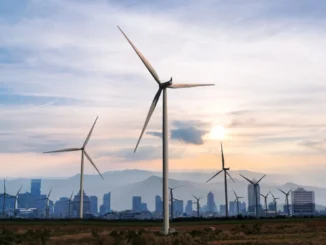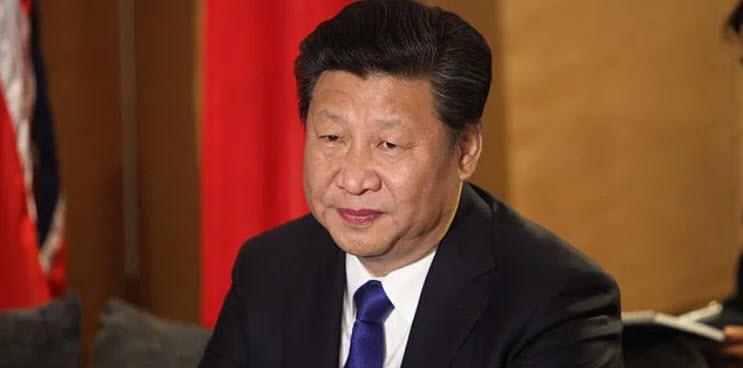
Outback Queensland is home to one of the largest potential wind zones in the country, but a lack of infrastructure and a shortage of skilled workers are major roadblocks in reaching national renewable energy targets.
In places like Hughenden, about 400 kilometres south west of Townsville, the sun shines for 320 days of the year.
The state government’s planned super hub is expected to generate 10 gigawatts of energy and open the door to green hydrogen production in Queensland.
Stage 1 of the hub is a combination of wind, battery, and solar farms to be built in the Flinders Shire.
Once complete, it will have a combined capacity of 2 gigawatts — enough energy to power one million homes.
Nathan Blundell, general manager of development at Windlab, one of the companies tasked with building the first stage of the super hub said the region had a capacity factor of more than 60 per cent — one of the highest in the country.
“That means you’re getting power generation 60 per cent of the time, which is quite high,” he said.
“It’s windy at night-time … it’s windy when everywhere else in the country isn’t windy.
“That correlation with other areas of the nation actually means it’s really crucial not just for Queensland, but for the entire National Electricity Market to decarbonise.”
‘A massive project’
The super hub will rely on a 1,000-kilometre transmission line which will stretch from Mount Isa to the east coast, connecting the north west to the national electricity grid for the first time.
Director of operations Colin Langton said CopperString 2032 — formerly known as CopperString 2.0 — is the largest network project currently in Australia.
“This will be a big step in the right direction,” he said.
Part of the transmission line, between Townsville and Hughenden will carry 500,000 volts (500kV).
“500kV is the highest voltage that we have in Australia,” Mr Langton said.
“There’s a lot of that in the southern states, but it’d be the first time that we’ve had 500 KV in Queensland.
“It’s a massive project … just the scale will bring some real challenges.”
He says one of the main challenges will be sourcing the 800 workers needed for the construction phase of the transmission line.
“We’re really focusing on opportunities for locals and that’s all the way out to Mount Isa from Townsville and the Burdekin area,” he said.
“We’re going to have a training school in Townsville, and Powerlink has just started a training school in Gladstone so there’ll be local training opportunities.
“[But] we will need to supplement [the workforce] with some overseas workers as well, just because of the size and scale of this project, and all the other projects that are going on in Australia at the same time.”
‘Daunting’ shortage of skilled workers
The Clean Energy Council said Australia’s skills shortage across the clean energy sector is “threatening” the roll out of projects around the country.
Director of Workforce Development, Anita Talberg said Australia’s skilled workforce would need to double over the next five to seven years as a “conservative estimate”.
“Depending on whether we are considering a large export market, for example for green hydrogen, we may need up to 250,000 to 400,000 workers over the next 15 years,” Dr Talberg said.
“Those numbers are quite eye-watering and a bit daunting. It’s a real challenge.”
Dr Talberg said the gap will ultimately need to be filled by international expertise.
“Ideally, we’d love to have a homegrown workforce. The reality is that’s probably not going to make the cut,” she said.
“Particularly in areas where we don’t have a lot of that skill set already in Australia, we’re going to need to draw on that global talent.
“I think it can be done; we just need to make sure that we’re starting that work now.”
The ‘land of opportunity’
Sam Fryer lives on a property between Hughenden and Prairie with his young family.
He says while the region is “at full capacity” he is keen to see the north west make the most of the renewable energy boom.
“There is a shortage of accommodation … we’re lacking workforce right now in regional Queensland.
“Our infrastructure currently — whether you’re looking at the hospital, schools, roads, or the housing — needs to be upgraded to accommodate for that larger population coming in.”
“It’s a land of opportunity it just needs a bit of help to get there.”
He said projects such as the Super Hub and CoppperString have the potential to create long-term benefits for places like Hughenden, Mount Isa and surrounding areas.
“It’d be great to somehow ensure that there’s a long-term benefit of this in the towns, not just a short-term boom, with these workers coming through in an influx.”
Flinders Shire Council Mayor Jane McNamara hopes the projects will recharge the region’s population permanently.
“Our goal is to have 3,000 people back in the Shire … I see a very bright future ahead.”
But Cr NcNamara said there were obstacles to overcome first.
She said her first hurdle in supporting stage 1 of the project was water security.
“Desperately we will need more water,” Cr McNamara said.
“The bore that is servicing Prairie at the moment is about 80 years old. It’s just coping with the population that’s there now.”
Cr McNamara said the Flinders Highway was “one of the worst roads in Queensland”.
“It has real ruts where the transports are starting to get into it. It really needs a lot of work,” she said.



